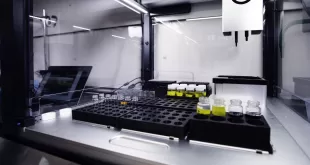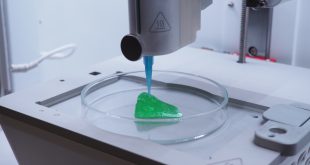By Hermione Wilson
The British Columbia life sciences sector, concentrated largely in Vancouver, is pretty typical of other major Canadian centres: it has no shortage of research institutions to draw innovation from, which gives rise to a lot of successful small and medium-sized biotech companies funded by venture capital from beyond our borders. Like the rest of the Canadian life sciences industry however, B.C. struggles to move past that stage.
“B.C., in general, is good at creating companies and moving them along into that past prototype, past proof of concept level and then, typical of all of Canada, it gets tricky when you’re getting to the point of commercialization,” says Doug Janzen, Founder and Managing Director of Northview LifeSciences, a private equity group that has seeded a number of biotech companies in both B.C. and Ontario. “Canada is getting better at it, but traditionally most companies have either sold or licensed their companies to bigger players south of the border or overseas to do that.”
The kinds of life science companies you see in B.C. are a mix of therapeutic development companies and “service providers who have a business model of generating revenue and doing contract, and then evolving… to developing their own products,” Janzen says.
Before he started Northview in 2010, Janzen (who has a background in both science and investment banking) took over a Vancouver-based cardiovascular company in 2003, built it up from $50 million to $1 billion and then licensed the technology to Merck for $800 million in 2008.
At STEMCELL Technologies, another Vancouver-based company, Chief Commercial Officer Andrew Booth says that over 95 per cent of business comes from outside of Canada. STEMCELL is the largest biotechnology company in Canada and a major player in the province’s life sciences scene. “We’re a company that provides tools to life sciences researchers to enable regenerative medicine or prospective regenerative medicine therapies,” Booth explains. “We provide the picks and shovels of the stem cell and regenerative medicine gold rush.”
The company was spun out of the Terry Fox Laboratory (TFL) at Vancouver’s BC Cancer Agency 24 years ago by Allen Eaves, former director of TFL and a head of Clinical Hematology at the University of British Columbia. STEMCELL continues to hire researchers from UBC, Simon Fraser University and the BC Cancer Agency, Booth says. “We’re riding the wave of all the research being put into regenerative medicine.”
Due to a high concentration of academic institutions and research centres, B.C. has no shortage of innovative people to work with. The region has historically excelled and been a leader in fields such as virology, lipid drug delivery technology and antibodies. A number of B.C. companies are in the antibody space, including STEMCELL. Despite the region’s historical competency in life sciences, however, there are no GMP manufacturing facilities in Vancouver capable of producing clinical-grade antibodies.
“It’s really too bad that there isn’t, because at STEMCELL we could really use that facility right now, because for some products we have had to turn to contract manufacturers in the U.S.,” Booth says. “Although STEMCELL has the capability to manufacture products for research purposes, some clients are looking to get their own products to the clinic and are asking for all the inputs in the process to be manufactured under GMP.” Because of this, the company has to outsource approximately 20 per cent of production to third party manufacturers in the U.S. and expects that to grow in the coming years.
“It pains us because we would love to keep it here in B.C. and Canada,” Booth says. STEMCELL is currently trying to work out how it might be able to build the necessary infrastructure here and repatriate the manufacturing back to B.C., he says. The company would eventually like to build a GMP manufacturing facility in B.C. that would benefit both STEMCELL and the region’s biotech community at large.
Paul Terry is the President of PHEMI Systems, a company whose mandate is to facilitate access to data for those who work in life sciences, and improve patient outcomes and care. The company works with a diverse team of computer scientists, geneticists, mathematicians, physicists, and people with English degrees to sort through vast amounts of data that will be useful for researchers and clinicians alike. “PHEMI is to life sciences data what Google would be to web pages,” Terry says.
The data the PHEMI team combs through includes census information, discharge summaries, pharmacy records, electronic medical records, injection rates, and even Twitter feeds. PHEMI recently created a database of about a billion genomic key values and improved the search time for looking at drug interactions with genomic SNPs. The company is currently being sponsored by Merck to look at diabetes data, a condition on which Terry estimates B.C. spends about $1.6 billion each year.
“Medicine and pharma want to be evidence-based,” Terry says. “They want to be able to look at the data and say, ‘yes, that drug worked,’ or ‘that drug didn’t’, and often that data is not available.
Terry has also sat on the board of LifeSciences BC, the industry association which supports and represents the province’s life sciences community, and notes the sector is a small, tight-knit group. “The degrees of contact are very strong,” he says. “Unlike other places in the world where you may know someone by reputation, here everybody knows everybody.”
It’s also a very supportive community, Terry says, especially of research and early-stage development. For example, the B.C. government has funded the Michael Smith Foundation for Health Research for the past 12 years, which has in turn funded a lot of health research at Genome BC. For an academic working in biotechnology at a place like UBC for example, “For every dollar of investor money, you can get three to four dollars of grant and in-kind funding,” Terry says.
There are also tax credits available to biotech start-ups, which Northview’s Janzen praises. “Seed investors of these companies receive 30 per cent of their investment back in the current tax year, so if you put $500,000 into a biotech start-up January 1, you’re getting $100,000 back from the provincial government,” he says. “That’s one of the best tax plans in North America in terms of driving or creating innovative start-up companies.”
B.C. is a very robust community, says Gordon McCauley, Interim President of the Centre for Drug Research and Discovery (CDRD). The industry generates around 14,000 jobs, about a billion dollars in GDP spending every year, and fairly significant support from local, national and overseas risk capital investors, he says. There are many advantages to operating in the province, not the least of which is the strong human infrastructure fed by teaching universities like UBC and SFU, McCauley adds.
Again, the problem is not at the early research and development stage, Terry says, but the translation of that innovation into commercial gains. “[B.C.] is strong, but slow in things like pharma and generating drugs and small molecules and so forth,” he says. “Typically, companies that do that go for about 10 years. B.C. suffers, like most of Canada actually, from a lack of investment. The ability to raise venture capital in Canada is always a struggle compared to a U.S. company that can put $20, $30, $40 million down pretty quickly.”
“The appeal to sustainable risk capital, venture capital investment in particular, I think is important and that’s a space that has diminished a little bit over the course of the last eight or 10 years and is just starting to come back,” McCauley says. “That’s obviously the lifeblood of this industry so I think it’s important that we continue to attract them.”
 BioLab Business Magazine Together, we reach farther into the Canadian Science community
BioLab Business Magazine Together, we reach farther into the Canadian Science community








